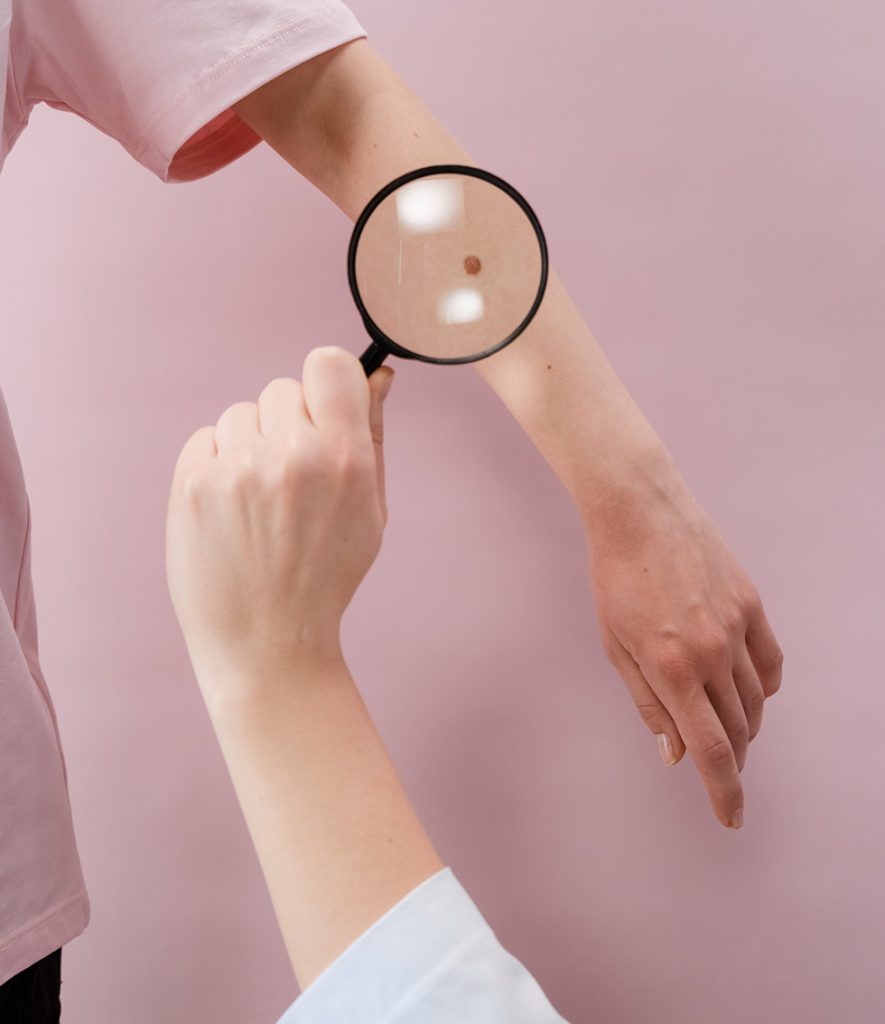Find a qualified dermatologist for skin care treatment tailored to your needs.
Find a qualified dermatologist for skin care treatment tailored to your needs.
Blog Article
Navigating Skin Cancer Cells Treatment: The Crucial Function of Mohs in Modern Dermatology Practices
Skin cancer, a difficult diagnosis, commonly leaves people coming to grips with numerous treatment options. Among these, Mohs surgery stands as a beacon in contemporary dermatology, renowned for its precise technique to cancer cells removal and preservation of bordering healthy and balanced tissue. This innovative technique assures not just remarkable cosmetic outcomes yet likewise uses instant outcomes, reducing person anxiety. As we explore the details of this treatment, one will value its pivotal duty in skin cancer therapy.
Understanding Skin Cancer: Types and Risks
Skin cancer, a possibly dangerous malady, is even more prevalent than lots of people realize. This disease, caused by the unchecked development of abnormal skin cells, primarily arises from DNA damages as a result of exposure to the sunlight and ultraviolet (UV) light. There are three major kinds of skin cancer: Basal cell cancer, Squamous cell cancer, and Cancer malignancy. While the former two are less deadly and compose the majority of diagnosed situations, melanoma is one of the most unsafe. It makes up just about 1% of skin cancer cells situations but creates the huge bulk of skin cancer deaths - hair loss. Threat aspects include reasonable skin, history of sunburn, extreme sunlight exposure, living at high altitudes or near to the equator, having lots of moles, a family history of skin cancer cells, and damaged body immune system.
What Is Mohs Surgical treatment and How It's Transforming Skin Cancer Cells Treatment
Regardless of the many therapies currently readily available for skin cancer, Mohs surgical treatment stands out as a groundbreaking and extremely efficient service. Named after Frederic E. Mohs, the doctor who developed the procedure, Mohs surgical procedure is an exact medical strategy made use of to treat skin cancer cells. Throughout the treatment, thin layers of cancer-containing skin are gradually eliminated more and checked out till only cancer-free tissue stays. This method allows the surgeon to verify that all cancer cells have actually been removed at the time of surgical procedure. This level of accuracy, incorporated with the capacity to spare as much healthy and balanced tissue as possible, is reinventing skin cancer therapy. Consequently, Mohs surgery has come to be a foundation of modern dermatology methods.
The Advantages of Mohs Surgical Procedure Over Standard Skin Cancer Therapies
Structure on the innovative nature of Mohs surgical procedure, it's imperative to consider its many benefits over standard skin cancer therapies. Unlike basic treatments, Mohs provides a greater treatment rate, often reaching 99% for newbie therapies and 94% for persistent cancers cells. This precision results from its unique strategy of gradually getting rid of and analyzing tissue layers until only cancer-free cells stay (dermatologist). Additionally, it decreases damages to healthy and balanced skin, leading to much less scarring and enhanced aesthetic outcomes. Mohs likewise offers instant outcomes, eliminating the anxiety-ridden wait typical with other approaches. It's cost-efficient, as the surgical treatment and tiny evaluation occur simultaneously, removing the requirement for added lab services. Thus, Mohs represents a significant advancement in skin-related practices. this page
The Procedure of Mohs Surgery: What to Anticipate During the Process

Possible Adverse Effects and Post-Operative Care of Mohs Surgical Treatment
Going through Mohs surgical procedure, like any type of other surgical procedure, involves possible side impacts that clients must be aware of. Common side effects consist of discomfort, bruising, and swelling at the surgery website. In some cases, extra treatments might be essential pop over to this site to make certain total elimination of the cancerous cells.
Conclusion

Report this page